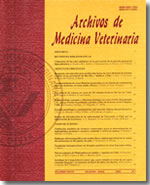A preliminary study of trace metals and porphyrins in excreta of Gentoo penguins (Pygoscelis papua) at two locations of the Antarctic Peninsula
Main Article Content
Abstract
Even though concentrations of most chemical elements in Antarctic ecosystems are very low as compared to other world's areas, their increasing time trends, as a consequence of the strong population growth and industrial development in countries of the Southern Hemisphere, could be affecting some vulnerable endemic species such as penguins. Concentrations (dry weight) of arsenic (As), cadmium (Cd), mercury (Hg) and lead (Pb) and porphyrins (copro-, uro- and proto-) were determined in feces of Gentoo penguins (Pygoscelis papua), collected at two locations of the Antarctic Peninsula (O'Higgins and Videla). We found higher (p< 0.05) levels of Hg in excreta of penguin colonies at O'Higgins (7.55 ± 1.28 μg g-1), whereas penguins at Videla showed the highest concentrations of Cd (1.68 ± 0.71 μg g-1). Gentoo penguins from O'Higgins site showed higher levels of copro- (1.81 ± 0.61 nmol g-1), uro- (1.74 ± 0.72 nmol g-1) and protoporphyrins (1.24 ± 0.46 nmol g-1), directly related to higher levels of Hg and Pb measured. These findings imply that some Gentoo penguin colonies of the Antarctic Peninsula are likely to develop some biochemical effects through trace metal contamination at some level. These preliminary results raise concerns about anthropogenic pollutants in Antarctica.

